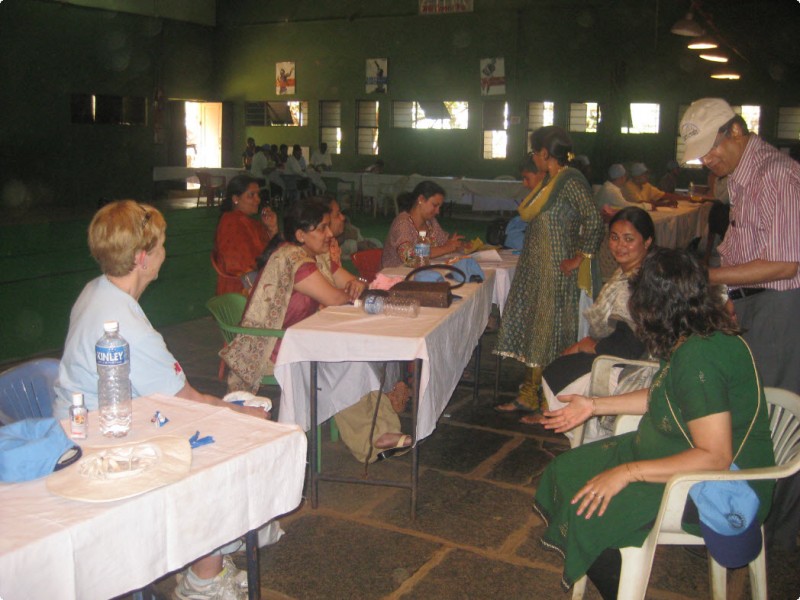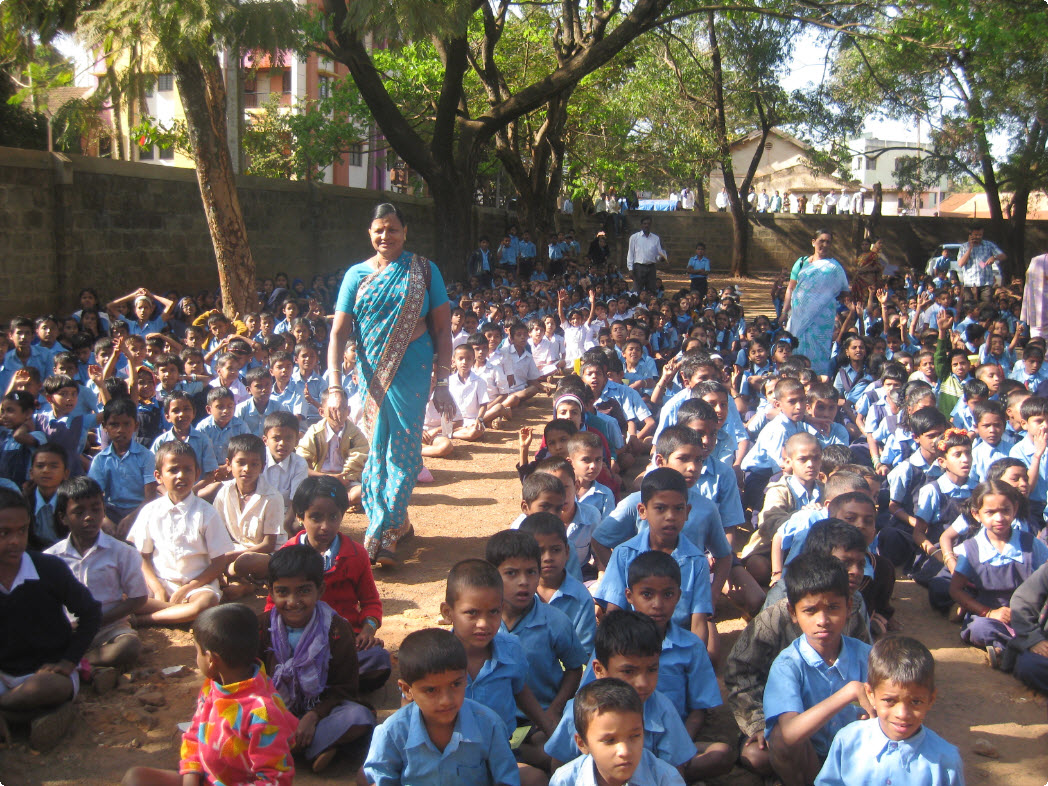Our largest distribution took place in the city of Belgaum, population of approximately one million people. We handed out 1,000 bedkits that day and believe me, it wasn’t easy organizing 1,000 children and their parents, but it was done and done smoothly, thanks to the local Rotarians and their families.
Vagabondish is reader-supported. When you buy through links on our site, we may earn a small affiliate commission. Read our disclosure.

1,000 Kids Line Up to Receive a Bedkit in Belgaum, India
The Rotarians are some of the most well-respected men in town. They are factory owners, they are doctors, they are IT developers and they are engineers. Their wives are just as educated. I spoke to one woman, Sonal Dhamankar, who is an obstetrician. She and her husband each own their own private practice in Belgaum and they have one daughter.
She explained the three kinds of medical facilities in India to me. First there was private, which is the best that medicine in India has to offer, however it is quite expensive.
Then there is public, where although it is free, you are almost guaranteed not to see a doctor. For instance, one doctor may be on staff at any given time however there are hundreds of people coming through the hospital at once. How is it physically possible to tend to all these people? Well, the doctor doesn’t, leaving the majority of patients to be cared for by the nurses and other staff instead.
Lastly, there is what Sonal refers to as the “quaks” — medicine doctors if you’d like to call them, providing locals with herbal and sometimes illegal treatments for spiritual reasons or because they can’t afford to see or get to anyone more qualified.
I asked her about population control as there are so many people living in India and so many of the people are poor. Why are poor families having so many kids if they can’t afford to properly take care of them? Today, the average lower income class family has three to four children. If they had any less, it would be looked down upon by the rest of the community.

Wives whose husbands belong to the Rotary Club of Belgaum. These Rotarians have been our main contact in planning and preparing for this two week distribution.
However, if you asked this question five or ten years ago, the number of children per household would be much greater, so slowly but surely the number is going down to a more manageable number of children. In addition, birth control is free in India, but it is the sole responsibility for the female to protect themselves. The men aren’t required to do anything. The only problem is no one teaches these women how to use protection so things tend to fall through the cracks.
I also had a chance to talk to some of the children of the Rotarian families, specifically 13-year olds Revati, Nikita and Ashana. Each one of these girls are the kindest, friendliest and curious bunch of girls I’ve ever met. We took turns asking each other questions about our life and what it was like to grow up in the different countries. Each one of the girls value the connection they have with their families, spoke perfect English, and had read and seen all the Twilight series films/books. Nikita plays guitar, Ashana is into fashion, and Revati is a badminton player. They are still a bit too young to think about college, but they all want to go and grow up to be Engineers or Interior Designers. We connected on Facebook that night so we could keep in touch.
One of my favourite things about traveling is learning about the people. If I had a choice of whether or not to visit a local museum or have tea with a person currently living in the community, I wouldn’t think twice about skipping the museum. Each one of the people I met in Belgaum gave me such a wonderful perspective of what it is like to live in a city not as large like Mumbai but not as small as Ashanti.
I thank them all for taking the time and giving me a small glimpse of what it is like in their world — and a special thank you to one woman for making sure I was taken care of and fed after a little mishap that morning.


